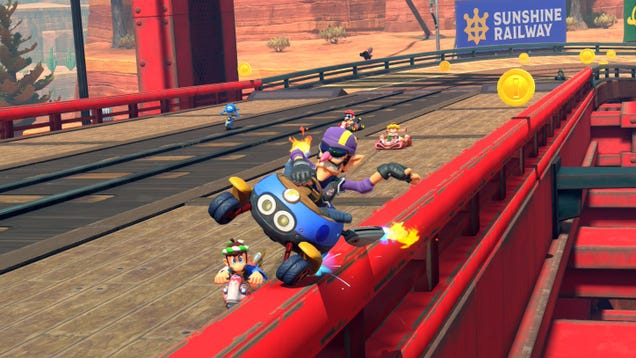
Parks (2nd Edition) Board Game Review

When the original Parks released in 2019, it quickly became a modern classic, thanks in large part to its gorgeous artwork celebrating the U.S. National Parks. See our review for details on that first edition. But Keymaster Games didn’t just slap a fresh coat of paint on the 2nd Edition and call it a day. Instead, it thoughtfully combined the base game with its expansions, streamlining the gameplay, updating the visuals, and introducing new features, all while preserving that cozy game feel.
The result is something that feels like both a sequel and a revision. Either way, the 2nd Edition of Parks is a great excuse to hit the trails, snap some photos, and fill your canteen all over again.
What’s in the Box
Like the original version, the second edition of Parks comes in a beautifully designed box packed with components that live up to its iconic design. Right on top, you’ll find a textured, high-quality rulebook that’s easy to follow and includes a QR code that links to a helpful video if you prefer to learn by watching.
While Parks is relatively straightforward to play, it includes a wide variety of components. Two log-shaped containers hold the game’s colorful wooden tokens, representing the resources you’ll collect while hiking the trail. Beneath those is a tri-fold game board with clearly marked spaces to guide you easily through setup. The game board has been completely redesigned and expanded, with an all-new permanent trail area, canteen tile drafting section, and more.
The real standout is the built-in storage tray at the bottom of the box, which is the best I’ve seen across the 60-plus board games I own. Everything has its place, from tokens and tiles to dice and cards, all packed efficiently to keep the game’s footprint compact, while making cleanup a breeze. The tray holds decks for the Parks, Gear, Passion, Ranger Teddy, and Volunteer Projects cards, along with solo reference cards, Season and Campsite tiles, Photo and Hiker tokens, Trail Site tiles, and more.
Each player gets a board featuring an empty backpack and water bottle, with clearly marked sections around the edges for organizing visited and reserved parks, purchased gear, and more. The Backpack holds up to 12 resources, while the water bottle has six spaces for Canteen tiles you can fill as you play.
One of the biggest updates in the 2nd Edition is the expanded card set, which now includes all 63 U.S. National Parks, up from 48 in the original. The cards feature all-new artwork and clean iconography that better matches the game’s updated, more colorful design. While some fans may miss the original illustrations from the Fifty-Nine Parks print series, the new art feels more cohesive and fits well with the rest of the game’s style. Each card includes the park’s name, founding date, and a short blurb about what makes it unique.
Rules and How It Plays
Gameplay in the second edition of Parks is a streamlined take on the original, incorporating elements from both expansions. The goal is simple: score the most points by hiking the trail, visiting parks, snapping photos, and completing optional objectives.
To set up, each player takes a pair of hikers and the matching player board. They also receive a random Canteen token, placed on their board, and a Campfire token flipped to its lit side if playing with more than three players. Each player is then dealt two Passion cards and chooses one to keep, discarding the other. Lastly, the First Hiker token is given to the designated starting player.
Passion cards provide small thematic goals to chase during the game, such as visiting parks with specific icons, using Wildlife tokens to take photos, or buying Gear from the item shop. Once completed, you can flip the card to choose one of two rewards: an ongoing effect that lasts the rest of the game, or an endgame bonus that adds extra points to your final score. Some Passions are easier to complete than others, and I usually leaned toward the endgame bonuses as those extra points were often the difference between winning and losing.
Each round in Parks takes place during one of three seasons: spring, summer, or fall. All three seasons are drawn randomly at the start of the game and each offers a unique bonus, such as rewarding players for collecting the most of a specific resource or visiting parks with certain icons. While spring and summer don’t grant any extra points, the fall season awards three bonus points to the winner, making it especially appealing. Players can choose to ignore these objectives, but they offer useful incentives if they align with your goals.
On their turn, players move one of their two hikers forward along the trail, collecting resources or performing the action on the Trail Site tile above the space they land on. Since you can only move forward toward Trail’s End, careful planning is key. Trail Site tiles can offer specific resources like sun, water, forest, and mountain; let you buy Gear from the item shop; allow you either to take a photo by exchanging any resource or add a token to your Canteen; roll the Trail Die for a random bonus; or trade any resource for a Wildlife token (which, fittingly, acts as a wild resource token). Every tile is shuffled each season to keep things fresh and unpredictable, except the Parks space, which is permanently located in the middle of the trail.
Landing on the Parks space lets you either reserve a park or visit one by paying its resource cost. If you have enough resources, you can even visit multiple parks on the same turn, making this space crucial for scoring points. Because of that, it’s often the most hotly-contested spot on the board. Thankfully, there’s no limit to how many parks you can reserve, and no penalty for not visiting them before the game ends. However, since you can’t reserve and visit in the same action, each choice on this space carries real weight.
Parks is ultimately a game about opportunity cost. Every move asks the question: What am I giving up by going here? Many Trail Sites offer one-time bonus resources, so players are racing to grab what they can before others beat them to it. Since each Trail Site is unique each season, and you can’t share a space with another player (including yourself) unless you use a lit campfire, every decision matters. You might skip ahead to grab a key resource or reach a specific site, but doing so means sacrificing everything you passed along the way, with no chance to go back until the following season.
Like many worker placement games, the real strategy in Parks comes from using both of your hikers in tandem to block opponents from collecting key resources or taking valuable actions. In higher player count games, the trail can get crowded fast, so refreshing your campfire to share spaces becomes essential. In lower player count games, there’s more room to breathe, allowing you to slow down and hit more spots along the trail. When a player reaches the Trail’s End, they choose one of three actions: take the Parks action, pay any resource to take a photo, or buy Gear. The first hiker to arrive at each space also gets a one-time bonus, adding an incentive to rush the trail. This constant push and pull between slowing down to gather resources and racing ahead for rewards is the real special sauce that makes Parks shine.
Because your Backpack can only hold 12 resources, you need to manage your inventory carefully by spending resources when possible, or you risk having to discard valuable ones at the end of your turn. The Canteen, by contrast, offers flexible bonuses whenever you collect water. Instead of placing the water in your Backpack, you can slot it into a Canteen to gain a resource or perform an action, depending on what you’ve collected. Some tiles even grant powerful effects, like taking the important Parks action. Once used, Canteen bonuses remain unavailable until the next season, so timing matters. Overall, they’re a clever way to give players alternative paths to key actions and resources without relying solely on open trail spaces.
Another way to earn points on the trail is by taking photos. This is most commonly done by visiting a Trail Site or the Trail’s End space with a photo icon, where you can exchange any single resource to take a photo worth one point. The player with the most photos at the end of the game also earns bonus points, giving you a good reason to snap a few along the way. If you land on a space with the Shutterbug badge, you’ll claim the Shutterbug token, which lets you take a second photo each time you use the photo action, as long as you can pay for it. However, the token can be taken by other players, so make the most of it while it’s yours.
During your expedition, you’ll have chances to visit the Gear shop and purchase items to help you along the trail. Gear costs between one and three sun resources, depending on the effect. While Gear doesn’t directly earn you points, it offers light engine-building opportunities like gaining bonus resources at specific Trail Sites, filling your Canteen after certain actions, or refreshing your Campfire more often. That said, I found the Gear shop to be hit or miss, unless it directly benefits your overall gameplan. You’re usually better off saving your resources for visiting parks, since that’s where the real points are.
While Parks supports solo play and up to five players, I found it shines best with two or three players. However, the strategy feels much more cutthroat at two players (a cooperative board game, this is not). Regardless of player count, when only one player has hikers left on the trail, they must move both hikers to Trail’s End on their next turn. This rule keeps players from being too greedy with trying to hit every space along the way, as they risk being rushed and missing out on more valuable opportunities. In a two-player game, this is even more noticeable, since one player can jump to the end early and force the other to skip potential turns needed to catch up.
Once you have a few hikes under your belt, you can add optional modules to Parks to increase variety or raise the difficulty. The Camping mode introduces three tents to the trail, allowing you to choose from a pool of powerful bonuses. However, using a tent means you cannot collect resources or use the action at that Trail Site. Volunteer Projects add more challenge by introducing restrictions that players must follow, such as spending extra resources when visiting parks, limiting the number of Wildlife tokens you can hold, or only being allowed to visit parks you’ve already reserved.
Parks includes a full solo mode that pits you against Ranger Teddy, an automa made up of two sets of hikers that take actions by flipping cards to determine their movement. Your goal is to achieve the highest score possible, which adds plenty of replayability. While Ranger Teddy’s hikers don’t collect resources, purchase Gear, or visit parks directly, they discard those elements when landing on the corresponding spaces, effectively simulating the pressure of competing players. Because their movement is often unpredictable, you’ll need to stay on your toes in order to succeed. You can also add Ranger Teddy to multiplayer games to simulate more players on the trail and add some variety.












